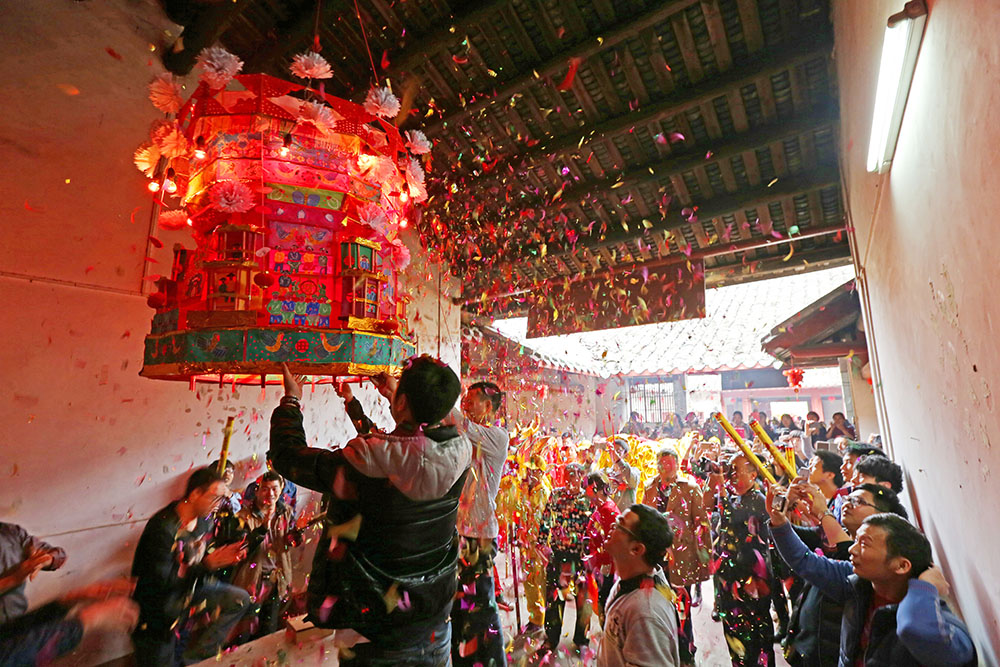Traditions of Guangdong villages

Guangdong locals "invite" a festive lantern into their home.
Folk villages in China were formed from agrarian culture and centuries of historical development. Examples of the folk culture that existed in these ancient villages can still be found today in Guangdong.
1. Worshiping laoye in Chaoshan
The worship of immortal laoye deities is a traditional folk custom and sacrificial rite in the Chaoshan area of Guangdong Province. The practice has a long history, wide influence and involves various objects.
In Chaoshan, there are a large number of laoye and in different seasons people worship different laoye. On the first and 15th day of every month in the Lunar Calendar, Chaoshan locals hold a routine worship ceremony for the Land God.
On the first month of the lunar year, prayers to laoye are believed to determine the family’s fortune during the following year. So from New Year’s Eve to the 15th day of the first month of the lunar year, locals will hold grand sacrificial rites at their homes every two or three days.
2. Annual worship ceremony in west Guangdong villages
The annual worship ceremony is a traditional folk festival with distinct local colors, which takes place in the rural areas of west Guangdong. The festival, which is categorized as intangible cultural heritage for Guangdong Province, is a ceremony held on the first and second months of every lunar year. During the ceremony, local villagers show their respect to deities to pray for a good harvest and prosperity and peace in the country.
Researchers indicate that the annual worship ceremony originated from the Ming Dynasty, and its folk customs are representative of the local culture. Local villagers believe that a worship ceremony will bring a bountiful harvest and luck in the following year. This belief comes from their ancestors’ reverence of nature. The yearly worship ceremony event is a carnival for locals, which is integrated with folk art, religious beliefs, culture and entertainment. It combines the local people’s earnest hopes for good lives with artistic thinking.
3. “Inviting” festive lanterns to homes in Meizhou and Xingning
People from the Hakka ethnic minority in Meizhou and Xingning, both Guangdong Province, “invite” festive lanterns into their homes to celebrate the Lantern Festival on the 15th day of the first month on the Lunar Calendar. During the Lantern Festival, residents hang various lanterns on their homes to add festive colors. But in Meizhou and Xingning, there is a lot of history and culture behind the lanterns.
When a family “invites” festive lanterns into their home, they ask their neighbors and relatives to join them. People often go outside to “welcome” the lanterns by setting off firecrackers along the road. Throughout the process, they should not stop lighting firecrackers, or it is seen as an ominous sign.
Wu Yong is a reporter at the Chinese Social Sciences Today.
